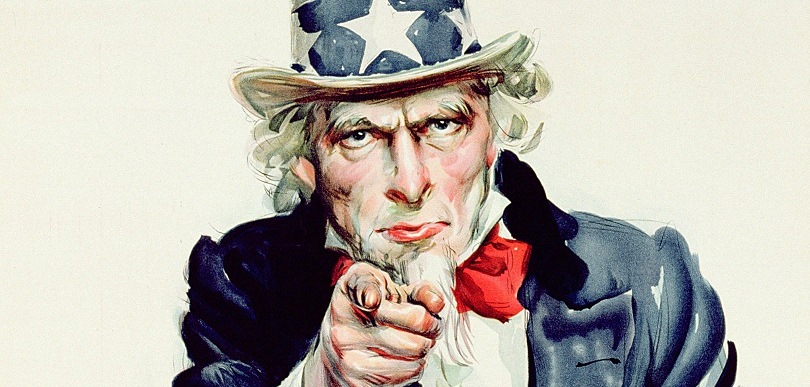
I WANT YOU – Propaganda during World War I
Brightly coloured illustrations, catchy phrases and a call for action were the main characteristics of the propaganda posters, films and literature of World War I. They encouraged women and men from all over the world to work hard and join the army during these dire times.
Soon after World War I broke out in 1914, the “War Propaganda Bureau” was set up in Great Britain with the primary aim of recruiting civilians for the army and navy. They produced propaganda posters in order to strengthen the morale of soldiers at the front and to encourage people at home to devote their time and energy to the war. Propaganda was used to promote what political leaders wanted people to believe.
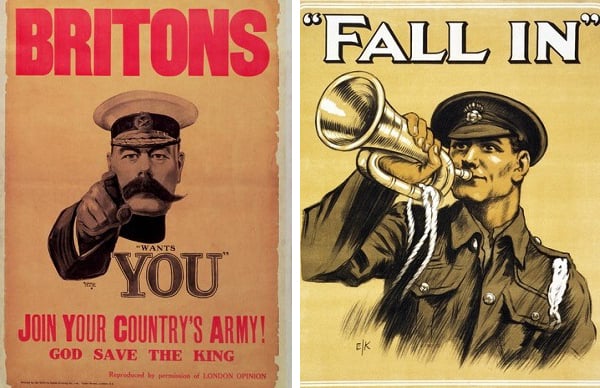
Left: Britons: Join Your Country’s Army! by Alfred Leete First World War recruitment poster with a portrait of Field Marshall Earl Kitchener (1850-1916) (Lithograph and letterpress on paper) (see also 65836) / Imperial War Museum, London, UK
Right: Fall In, 1915 (colour litho), English School, (20th century) / Private Collection / © Galerie Bilderwelt
The US entered war in 1917 and shortly after, their “Committee of Public Information” took over as their main propaganda agency. The American government were faced with civilians who were not eager to enter war so plenty of effort was put into their propaganda campaigns. Some of these campaigns included the iconic portrayal of Uncle Sam on recruiting posters.
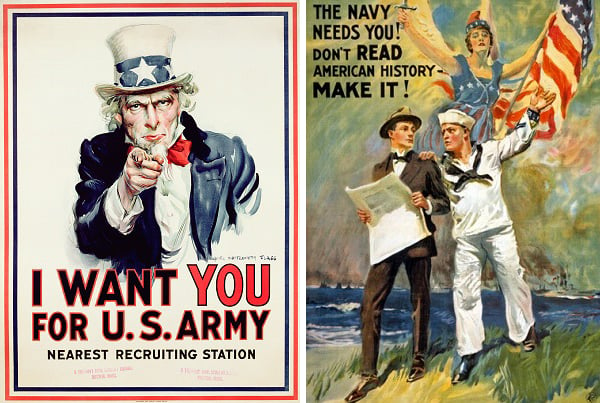
Left: ‘I Want You for U.S. Army’, American World War One recruitment poster (colour litho), Flagg, James Montgomery (1877-1960) / Private Collection / DaTo Images
Right: The Navy Needs You!, 1917 (colour litho), Flagg, James Montgomery (1877-1960) / Private Collection / © Galerie Bilderwelt
Countries differed in how they portrayed the enemy and their use of propaganda posters, films and press, but the main message stayed the same: encourage people to engage in the war effort. Information that reached the readers of newspapers was controlled and emotions provoked. The enemy was portrayed as an evil force that had to be fought.
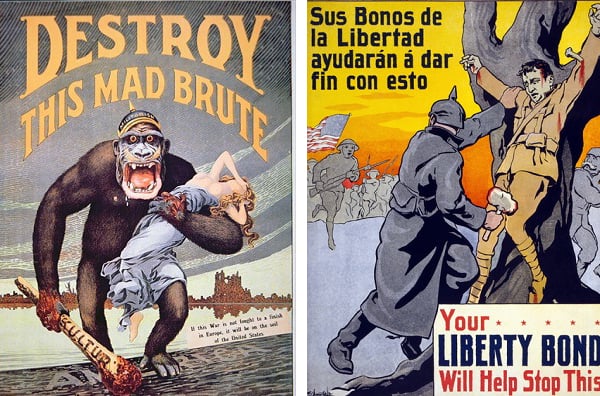
Left: ‘Destroy this mad brute’, World War One recruitment poster (colour litho), American School, (20th century) / Private Collection / Peter Newark Military Pictures
Right: Your Liberty Bond Will Help Stop This, 1917 (colour litho), Cueto, Fernando Amorsolo y (1892-1972) / Private Collection / © Galerie Bilderwelt
British and American propaganda posters relied heavily on graphics and good slogans, whereas German posters were more factual:
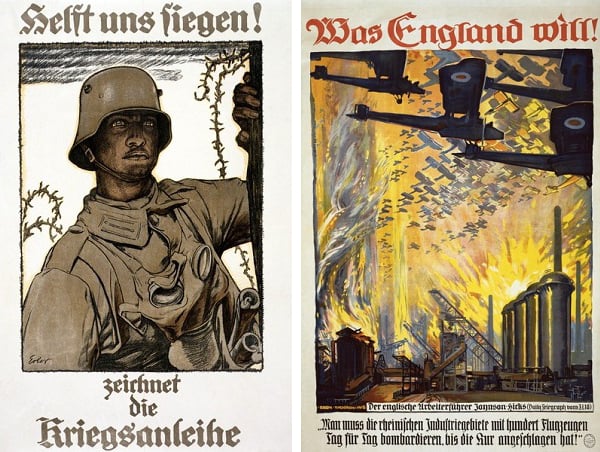
Left: Helft uns siegen! Zeichnet die Kriegsanleihe, pub. Munich, 1917 (colour litho), Erler, Fritz (1868-1940) / Private Collection / The Stapleton Collection
Right: What England Wants!, pub. Berlin, 1918 (colour litho), Tschirch, Egon (1889-1948) / Private Collection / The Stapleton Collection
Propaganda posters often targeted women, encouraging them to join the workforce and to motivate their husbands, sons and brothers to join the army.
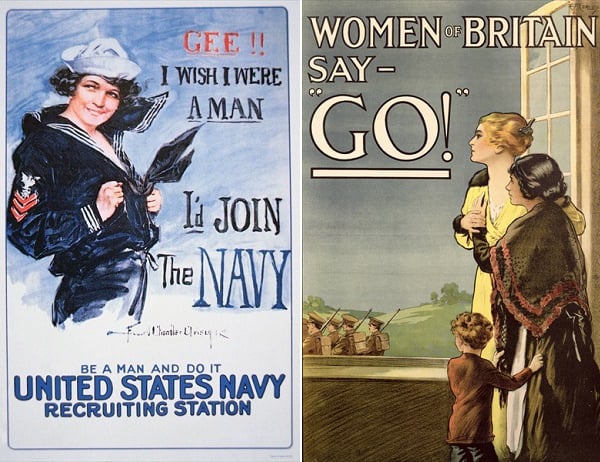
Left: ‘Gee!! I Wish I Were a Man, I’d Join the Navy’, United States Navy Recruiting Station poster (litho), Christy, Howard Chandler (1873-1952) / Private Collection / Peter Newark Military Pictures
Right: “Women of Britain Say – Go!”, recruitment poster, 1915 (litho), Kealey, E.P. (20th century) / Private Collection / Photo © Bonhams, London, UK
Find out more
Contact the sales team (uksales@bridgemanimages.com) for more information regarding licensing, reproduction and copyright issues.
